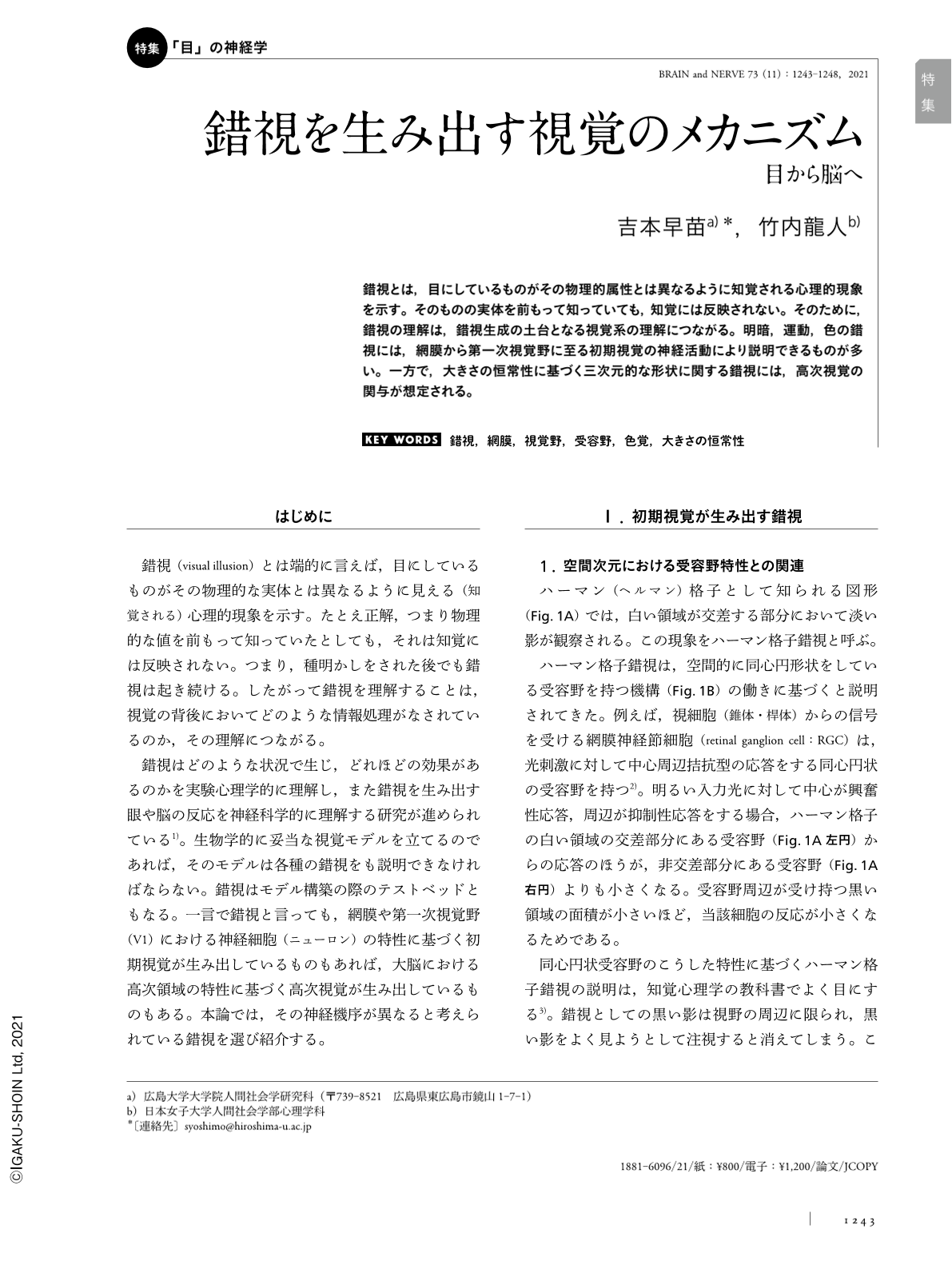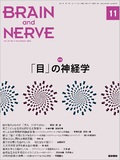Japanese
English
- 有料閲覧
- Abstract 文献概要
- 1ページ目 Look Inside
- 参考文献 Reference
錯視とは,目にしているものがその物理的属性とは異なるように知覚される心理的現象を示す。そのものの実体を前もって知っていても,知覚には反映されない。そのために,錯視の理解は,錯視生成の土台となる視覚系の理解につながる。明暗,運動,色の錯視には,網膜から第一次視覚野に至る初期視覚の神経活動により説明できるものが多い。一方で,大きさの恒常性に基づく三次元的な形状に関する錯視には,高次視覚の関与が想定される。
Abstract
Visual illusion is a psychological phenomenon characterized by perception that appears to differ from physical reality. Illusory perception persists even though the sufferers are aware of the physical properties of what they are observing. Thus, studying visual illusions has led to an improved understanding of the neural mechanism underlying visual information processing. Visual illusions are important tools in neuroscience. Some brightness illusions, such as the Hermann grid illusion or Chevreul illusion, can be explained by the function of the center-surround antagonistic receptive field of retinal ganglion cells. Additionally, color aftereffects were found to be produced in the retina. In addition, neurons in the primary visual cortex are responsible for the orientation-contingent color aftereffect, known as the McCollough effect. ISI reversal, a visual motion illusion, is known to be caused by a biphasic temporal mechanism located in the retinal or lower visual areas. Higher visual areas are responsible for the production of visual illusions such as the Ponzo illusion, size constancy illusion, or tabletop illusion. These illusions are perceived through the process of achieving size constancy from a two-dimensional retinal image. Thus, both low-level and high-level vision are involved in the perception of visual illusions.

Copyright © 2021, Igaku-Shoin Ltd. All rights reserved.


